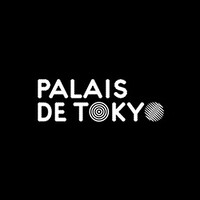Natures Mortes
May 22–October 24, 2021
13 avenue du Président Wilson
PALAIS DE TOKYO
75116 Paris
France
T 0033684440005
presse@palaisdetokyo.com
On May 22, 2021, the Palais de Tokyo is reopening its doors for Natures Mortes [Still Lifes], a carte blanche to Anne Imhof who has taken hold of the entirety of the Palais de Tokyo to create an all-embracing, polyphonic work. Here, she fuses space and bodies, music and painting, and her works with those of accomplices Eliza Douglas and 30 other guests. After having layed siege to the German pavilion with her exhibition and performance Faust for which she was awarded the Golden Lion at the 2017 Venice Biennale, Anne Imhof, who trained at the Staatliche Hochschule für Bildende Künste – Städelschule in Frankfurt while immersed in the city’s club and music scene, has established herself over a decade as a prominent figure in contemporary art through her radical work. Within the bare structure of the Palais de Tokyo, stripped down to its fragile carcass with its topography exposed, she sets up a glass maze which fragments the space, while generating new perspectives. Vanishing points and gaps are an invitation to diving into the darkness, down to the entrails of the Palais de Tokyo. Haunted by painting, the fleeting cycle of life and the disruptions of the present moment, she invites us to walk the space between life and nonlife, darkness and light, past and present, stillness and action, intensity and disenchantment, and to freely trace our own path across this vast, open stage. Fruits, inanimate objects, wilted flowers or cans of an evaporating liquid stimulate all our senses. They are a reminder that while the origin of still lifes lies in the theme of religious vanities, this allegoric depiction of passing time and death can also be seen as a celebration of the living. It can stand as the affirmation of a matrix in which art conjugates the impulses of life and death, pleasure and anxiety, melancholy and energy. Raised fists (in German, Faust means “fist”), arched bodies and damned souls make these liberated, subterranean energies vibrate. The architecture, transfigured by the artist into a glass palace, becomes a space in which temporalities collide, and, through infinite plays of reflections, apparitions and disappearances, it constructs an intermediary space between the interior and the exterior, from which new images emerge. Anne Imhof’s exhibition is an unstable form in motion, irrigated by bodies. The artist takes over the architecture and creates within it a new space-time, a new beat, one of the urgency of the present moment. The horizon is inverted, set on fire, temporalities confront one another, the cycle of the slow and inexorable circumvolution of heavenly bodies dialogues with atomic deflagrations in an era of a nuclear apocalypse. From these artificial clouds, emaciated and spectral bodies emerge, as though flayed by a slaughtered nature. Anne Imhof composes these Natures Mortes—memento mori to the here and now—where life is lurking in the darkness, ready to spring out. A performative dimension infuses the entire exhibition, from visual works to sonic compositions, from architecture to bodies. Even deprived of human presences, and over and beyond any show, the exhibition bears in counter-relief the imprints of vanished bodies, the traces of their presence, making their voices resonate, while they shift endlessly. For a week in October, Anne Imhof will deploy in the space of the Palais de Tokyo her new performance piece, born at the very heart of her exhibition.
Anne Imhof was born in 1978 in Gießen (Germany). She lives between Berlin (Germany) and New York (USA).
Curators: Emma Lavigne, President of the Palais de Tokyo and Vittoria Matarrese, performance arts director.
Artists: Anne Imhof, Alvin Baltrop, Mohamed Bourouissa, Eugène Delacroix, Trisha Donnelly, Eliza Douglas, Cyprien Gaillard, Théodore Géricault, David Hammons, Eva Hesse, Mike Kelley, Jutta Koether, Klara Lidén, Joan Mitchell, Oscar Murillo, Eadweard Muybridge, Cady Noland, Precious Okoyomon, Francis Picabia, Giovanni Battista Piranesi, Sigmar Polke, Paul B. Preciado, Bunny Rogers, Sturtevant, Yung Tatu, Paul Thek, Wolfgang Tillmans, Rosemarie Trockel, Cy Twombly, Adrián Villar Rojas


